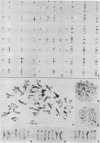Abstract
The somatic chromosomes of common wheat, Triticum aestivum L. (2n = 6x = 42), and those of two of its diploid progenitors and T. speltoides, have been individually identified by a Giemsa staining technique. In wheat, telocentric chromosomes were used to aid the recognition of individual chromosomes, and an ideogram has been constructed depicting the C-band positions. There is no similarity in the C-banding of chromosomes within a homoeologous group, with the possible exception of group 5. Comparisons of the C-banding of the diploid species T. monococcum, T. speltoides, and T. tauschii with that of the A, B, and D genomes, respectively, in hexaploid wheat corroborate that T. speltoides could not be the donor of the B genome to wheat and that T. monococcum and T. tauschii are the probable donors of the A and D genomes, respectively.
Keywords: polyploid, chromosomes, heterochromatin, genomes
Full text
PDF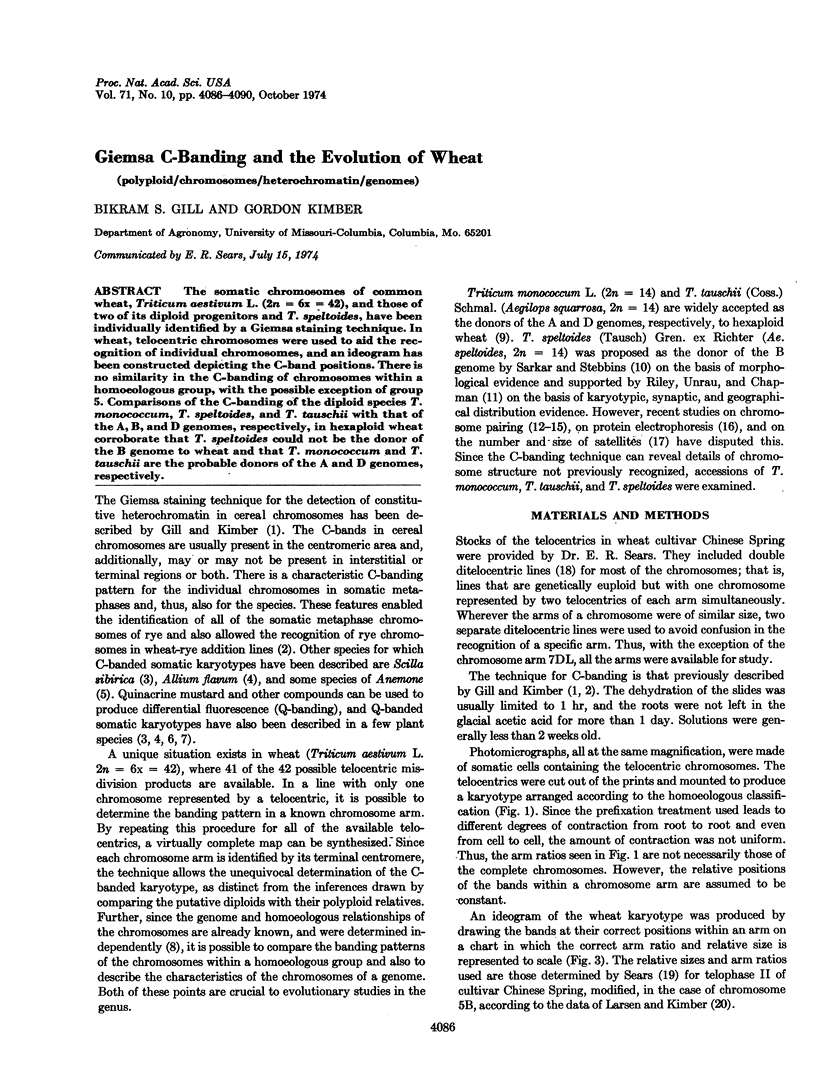

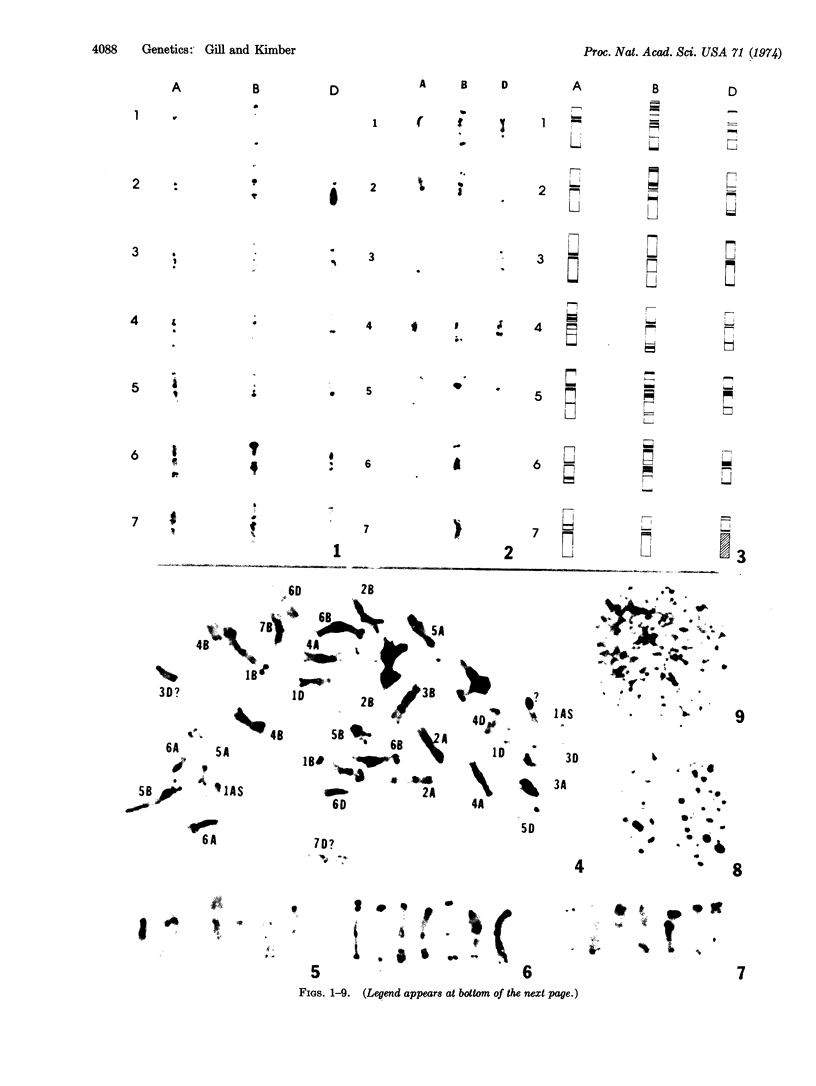
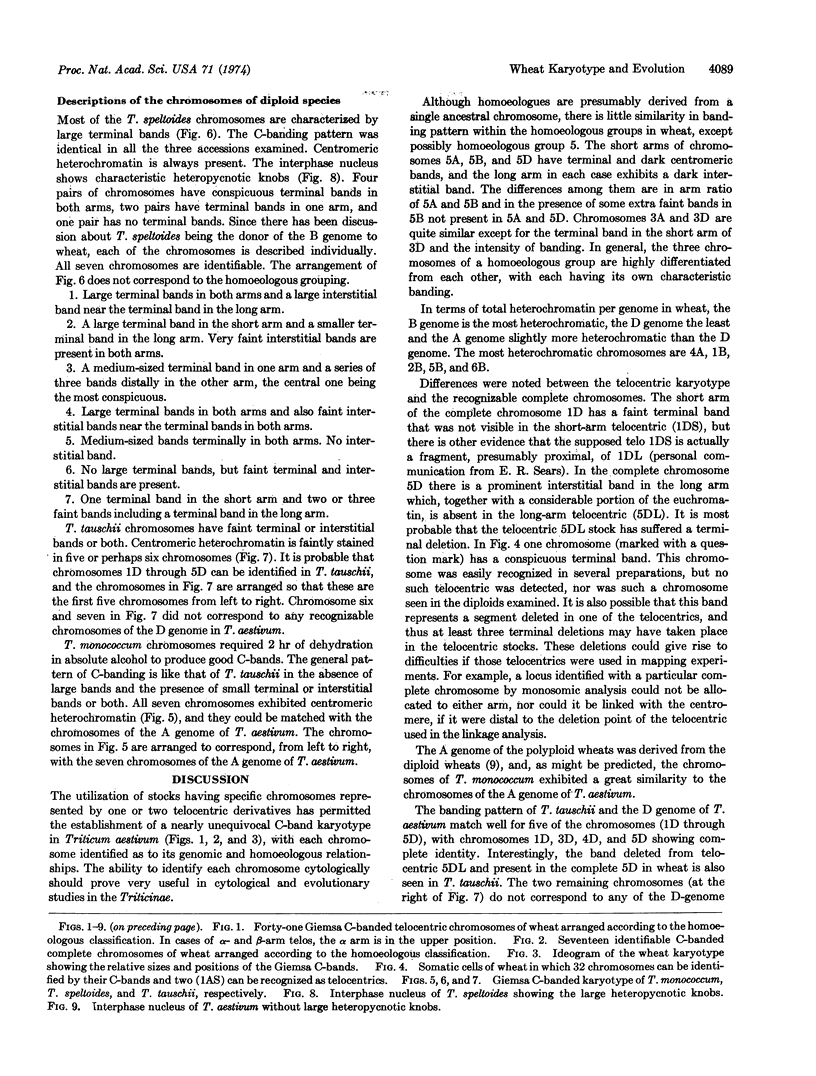
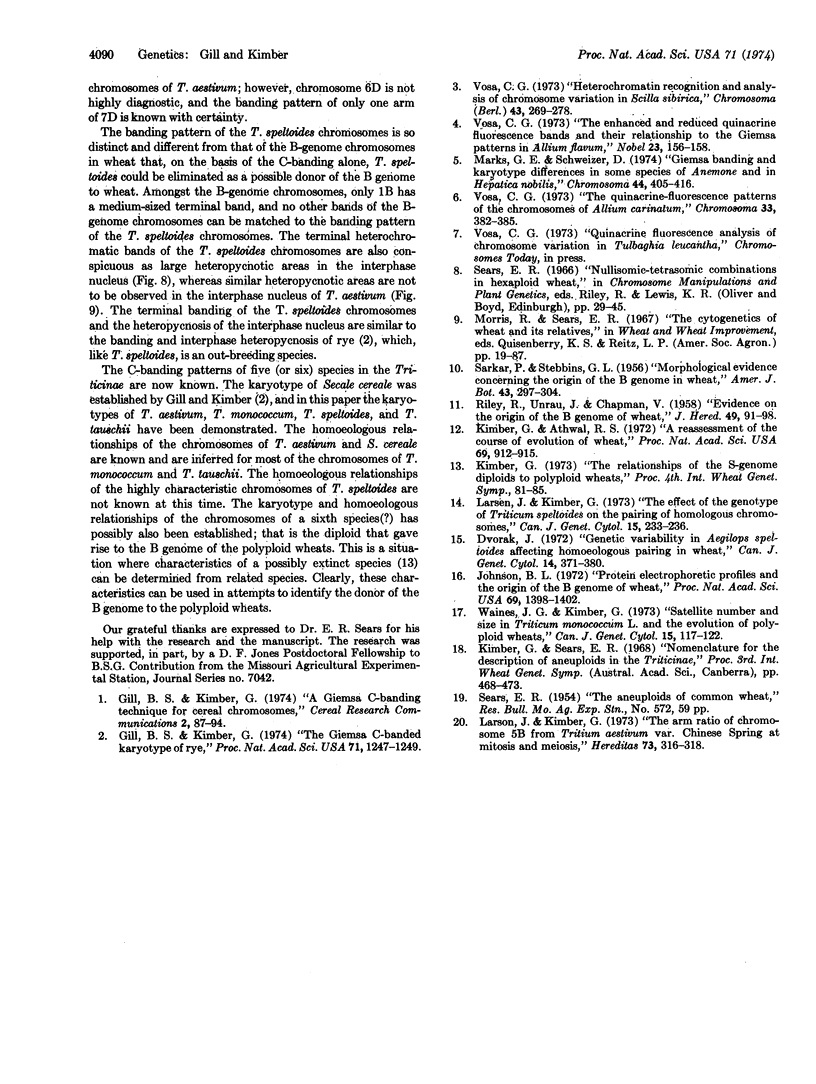
Images in this article
Selected References
These references are in PubMed. This may not be the complete list of references from this article.
- Gill B. S., Kimber G. The Giemsa C-banded karyotype of rye. Proc Natl Acad Sci U S A. 1974 Apr;71(4):1247–1249. doi: 10.1073/pnas.71.4.1247. [DOI] [PMC free article] [PubMed] [Google Scholar]
- Kimber G., Athwal R. S. A reassessment of the course of evolution of wheat. Proc Natl Acad Sci U S A. 1972 Apr;69(4):912–915. doi: 10.1073/pnas.69.4.912. [DOI] [PMC free article] [PubMed] [Google Scholar]



